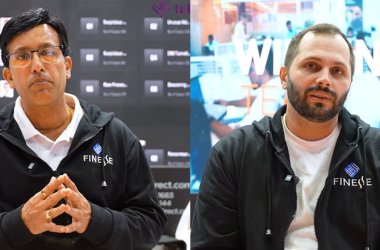
Critical industry sectors such as healthcare, government and utilities services are becoming increasingly reliant on digital systems, and as these systems grow more sophisticated, so do the threats that target them. At the heart of this delicate balance between innovation and security lies a group often overlooked – network and cyber security professionals.
Imagine a hospital’s life-support systems faltering during critical surgery, a school building’s security lockdown failing during an active threat drill, or a state government’s emergency response network collapsing during a natural disaster. These scenarios are daily hypotheticals faced by the cybersecurity teams of our digital age. Their tireless work ensures data is protected, services stay online, and critical operations are uninterrupted, even under immense pressure. The digital dependence of critical industries has made a secure IT infrastructure absolutely essential. As a result, cybersecurity professionals are now as vital as any frontline worker in maintaining the integrity and functionality of these systems.
Securing the UAE’s Digital Backbone
Across a wide range of sectors, maintaining secure network uptime is a constant challenge. Secure network and cyber security professionals operate under immense pressure, often with limited resources and staffing, all while facing evolving and emerging cyber threats. To understand the stakes, consider the critical role of these specialists in ensuring continuity of essential services.
Whether supporting a state-of-the-art hospital or a government data center, secure IT infrastructure is non-negotiable. The backbone of everything from AI-native diagnostics to real-time crisis response lies in resilient, secure networks. In a large hospital, for instance, cyber teams will typically manage and safeguard a multitude of devices, many of which contain highly sensitive data or perform life-saving actions. These professionals must secure high-priority Protected Health Information (PHI) data and applications, whether in the data center or the cloud, enforce consistent security policies across distributed environments, and navigate the growing “Internet of Medical Things” (IoMT). In this high-stakes environment, even a momentary lapse can have life-altering consequences.
Network professionals traditionally concentrate on ensuring the reliability and performance of routing and switching infrastructure, while security teams focus on safeguarding hardware, software, and data from breaches and threats. Historically, these roles have worked independently, but today’s fast-evolving technology environment requires them to collaborate more closely and integrate their efforts.
Resilient and robust networks empower healthcare cyber teams to overcome security hurdles and headaches and pivot their focus beyond core responsibilities to organizational innovation, from improving operational efficiencies to enhancing patient care.
Defending Against a Rising Tide of Threats
Cyber attacks are becoming increasingly sophisticated, with AI-powered ransomware, data breaches and even attacks on critical infrastructure on the rise. Cyber security professionals face the daunting task of staying ahead of these threats, despite being understaffed and facing oceans of data that need protection.
Traditional security models – such as perimeter firewalls – alone are no longer effective. Modern security demands layered protections as multi-factor authentication (MFA), intrusion detection systems, and proactive threat intelligence. Integrating solutions such as Zero Trust, for example, which verifies every user and device within the network, and AI-native technologies that spot and neutralise threats before damage occurs, is consequently becoming the norm. Yet, even with the smartest tools, human expertise remains irreplaceable. There’s no denying that AI is fundamentally changing the cybersecurity landscape, both for threat actors and defenders. Still, human expertise is irreplaceable. While AI can process data and flag anomalies, trained professionals make the decisions that ultimately protect critical infrastructure.
People Power: The Heart of Effective Cyber Response
There are two critical areas in which the “human touch” remains indispensable in cybersecurity operations: threat interpretation and response.
For threat interpretation, consider an alert triggered by an anomaly within a network. AI might identify the unusual activity but won’t have the intuition and contextual understanding needed to discern a legitimate cyber threat from a simple irregularity. This is where the expertise of secure networking and cyber security professionals comes in, bringing a level of critical thinking and analysis that AI algorithms, however well-trained and sophisticated, cannot yet replicate.
Furthermore, the collaborative aspect of cyber incident response underscores the importance of the human touch. When a potential security breach is detected, it requires effective communication and shared understanding between the network and security teams. These teams’ ability to correlate and interpret information from diverse sources, consider the broader context and make judgement calls based on experience is what ultimately determines the effectiveness of the defender’s response.
Bridging traditional divides and applying collaborative critical thinking to complex situations is the key ingredient to ensure our critical industries remain up and running, smoothly and safely.
A Call for Recognition and Investment
In an increasingly interconnected world, secure networks and cybersecurity professionals are the backbone of digital infrastructure. They are the guardians of our data and online experiences – and their expertise, dedication, and unwavering commitment keep our connected world running smoothly. Just as the opening scenarios illustrated potential disruptions, robust infrastructure managed by strong network and cybersecurity teams enables the continuity of essential services and the stability of critical industries.
As technology continues to evolve, so must our investment in these professionals, now and in the future. AI-native solutions are breaking down silos between network and cybersecurity teams, fostering collaboration and streamlining operations. But solutions alone are not enough. The human element—dedicated, expert, and often under-appreciated—is what keeps our digital world safe, stable and functioning.
This article is a part of “The Essential Tech Worker” series by Juniper Networks, bringing to life the importance of IT professionals and raising awareness of their growing impact within organizations, providing insights into their day-to-day work.
This opinion piece is authored by Refat Al Karmi, Senior Consultant for META, Juniper Networks.





